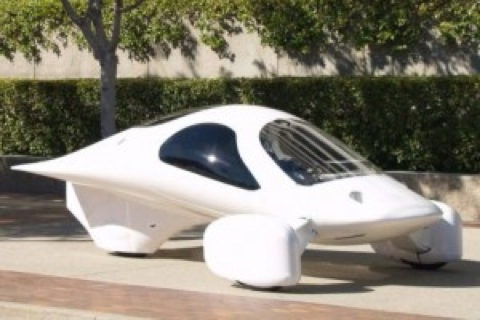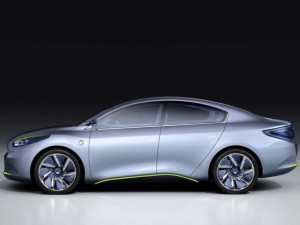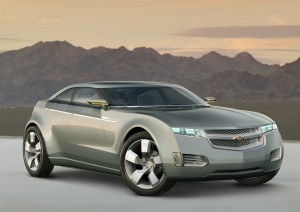Key words :
future energies,
leaf
,sustainability
,climate change
,electric cars
,aptera
,better place
,byd
,fluence
,nissan
,plug in
,renault
,volt
,chevy
,consumption
,energy
My favorite green technology
31 Dec, 2009 01:18 pm
No offense to those working hard to bring wind, solar or geothermal energy to scale, or to people who are jazzed about energy efficiency, but I'm really excited about electric cars. It's my favorite green technology, and one that's on the verge of a breakthrough.
 |
| Aptera |
The electric car could bring about the biggest transformation of the auto industry since its invention. If all goes well, we will be seeing many more of them on the roads in 2010 and especially 2011.
With thanks to Plug In America , a nonprofit group that promotes plug-in vehicles, which put this list together, here are12 myths about electric cars that, just in time for the 12 days of Christmas. Plug In America began as a group of electric vehicle (EV) drivers, so its members are speaking from experience.
I’m now going to do my best to slow down and stay away from my laptop between Christmas and New Year’s Day–so enjoy your holidays, happy new year and I’ll be back in 2010.
1. MYTH: EVs don’t have enough range. You’ll be stranded when you run out of electricity
FACT: Americans drive an average of 40 miles per day, according to the U.S. Dept. of Transportation. Most new BEVs have a range of at least double that and can be charged at any ordinary electrical outlet (120V) or publicly accessible station with a faster charger. The latter, already in use, will proliferate as the plug-in infrastructure is built out. At present, all it takes is planning for EV owners, who can travel up to 120 miles on a single charge, to use their cars on heavy travel days. Alternatively, a PHEV goes at least 300 miles on a combination of electricity and gasoline.
2. Myth: EVs are good for short city trips only
FACT: Consumers have owned and driven EVs for seven years or more and regularly use them for trips of up to 120 miles.
3. MYTH: EVs just replace the tailpipe with a smokestack
FACT: Even today, with 52% of U.S. electricity generated by coal-fired power plants, plug-in cars reduce emissions of greenhouse gases and most other pollutants compared with conventional gas or hybrid vehicles. Plug-ins can run on renewable electricity from sources such as the sun or wind. PHEVs will reduce greenhouse gases and other emissions, even if the source of electricity is mostly coal, a 2007 study by the Electric Power Research Institute (EPRI) and NRDC showed. Read the summary of some 30 studies, analyses and presentations on this topic.
4. MYTH: The charging infrastructure must be built before people will adopt EVs
 |
| Renault Fluence ZE |
5. MYTH: The grid will crash if millions of plug-ins charge at once
FACT: Off-peak electricity production and transmission capacity could fuel the daily commutes of 73% percent of all cars, light trucks, SUVs and vans on the road today if they were PHEVs, a 2007 study by Pacific Northwest National Laboratory found. Also, utilities are upgrading some local distribution systems to accommodate plug-ins, just as they do when residents add more air conditioners and TVs. Plug-ins, which can be seen as energy storage devices on wheels, can actually benefit the grid, making green energies like solar and wind power even more viable.
6. MYTH: Battery chemicals are bad for the environment and can’t be recycled
FACT: Ninety-nine percent of batteries in conventional cars are recycled, according to the U.S. Environmental Protection Agency. The metals in newer batteries are more valuable and recycling programs are already being developed for them. Utilities plan to use batteries for energy storage once they are no longer viable in a vehicle.
7. MYTH: EVs take too long to charge
FACT: The most convenient place and time to charge is at home while you sleep. Even using the slowest 120-volt outlet, the car can be left to charge overnight, producing about 40 miles of range. Most new BEVs and PHEVs will charge from 240-volt outlets providing double or triple the charge in the same amount of time. Charging stations that reduce charging time even more are beginning to appear.
 |
FACT: New technologies are typically costly. Remember when cell phones and DVDs were introduced? Also, the government stimulus package includes a $2,500 to $7,500 tax credit for EVs and PHEVs. Some states are considering additional incentives ($5,000 in California and Texas). And, the purchase and lifetime operating cost of an EV is on par with or less than its gas-powered equivalent because EVs require almost no maintenance or repair: no oil or filter changes, no tune ups, no smog checks.
9. MYTH: Batteries will cost $15,000 to replace after only a few years
FACT: The battery is the priciest part of a plug-in, but costs will drop as production increases and the auto industry is expected to be purchasing up to $25 billion in advanced batteries annually by 2015. Some car makers plan to lease their batteries, so replacement won’t be an issue. The Chevy Volt PHEV will have a 10-year battery warranty that would cover battery replacement.
10. MYTH: There isn’t enough lithium in the world to make all the new batteries
FACT: Even in a worst-case scenario of zero battery recycling, aggressive EV sales, no new mining methods or sites, existing lithium stores will be sufficient for projected EV production for the next 75 years. See an analysis at PlugInAmerica.org. Also, lithium comes from many countries (24% is found in the United States), so we won’t be dependent on any one global region.
11. MYTH: Lithium batteries are dangerous and can explode
FACT: Among the many kinds of lithium-ion batteries, lithium-cobalt batteries found in consumer electronics can pose a fire risk in certain circumstances. These risks can be mitigated by the use of advanced-battery management systems and careful design that prevents “thermal runaway.” Most plug-in vehicle makers are working with other battery types (such as lithium-iron-phosphate and lithium-manganese) which have inherent safety advantages and provide more years of service.
12. MYTH: Most of us will still be driving gas cars through 2050
FACT: Several irrefutable factors are driving the shift from gasoline to plug-in vehicles: ever-toughening federal fuel economy standards and state caps on greenhouse gas emissions; projected price hikes for petroleum products as demand increases and supply flattens or drops; broad agreement over the need for America to reduce its reliance on petroleum for economic and national security reasons; and climate change, which is occurring faster than previously thought, according to the journal Science and many other sources.
Originally published on MarcGunther.com
Key words :
future energies,
leaf
,sustainability
,climate change
,electric cars
,aptera
,better place
,byd
,fluence
,nissan
,plug in
,renault
,volt
,chevy
,consumption
,energy
-
12/12/12
“Peak Oil” is Nonsense… Because There’s Enough Gas to Last 250 Years.
-
05/09/12
Threat of Population Surge to "10 Billion" Espoused in London Theatre.
-
05/09/12
Current Commentary: Energy from Nuclear Fusion – Realities, Prospects and Fantasies?
-
04/05/12
The Oil Industry's Deceitful Promise of American Energy Independence
-
14/02/12
Shaky Foundations for Offshore Wind Farms
3 comment(s)
[1]
Comment by wilburn whittington
4 Jan, 2010 11:28 pm
I stumbled upon this article and I was wondering where exactly you got your information about "Myth 1." I am not familiar with 80+ mile averages of battery power life for vehicles. I believe the hope is to keep sell the 40 mile Volt for all electric driving. Please show me the particular source of this information. Also, "Myth 2" seems a little misleading due to the fact that the vehicles made today and in the current future will rely on other power sources, such as gasoline, to make 120+ mile trip.
 Alert Moderator
Alert Moderator
[2]
Comment by Thomas
8 Jan, 2010 01:50 am
Ah I totally agree. I dream about a day when I can drive my EV to work while my solar panels at home get a nice charge....then I can go home an plug my car in for an overnight charge! I will never have to visit the gas station again!
 Alert Moderator
Alert Moderator
[3]
Comment by firestar
18 Jan, 2010 11:08 pm
You can choose to buy your own windmills and solar panels, but they are extremely expensive (costing more than $40,000 for larger units). All users who have tried the step-by-step guide in Earth4Energy know that they can build the whole system for less than $200. Along with the total cost of the guide, it is the best and most value-for-money solution for anyone looking to build their own home power energy system. http://www.green-wind-solar.easy-go.biz/
 Alert Moderator
Alert Moderator






